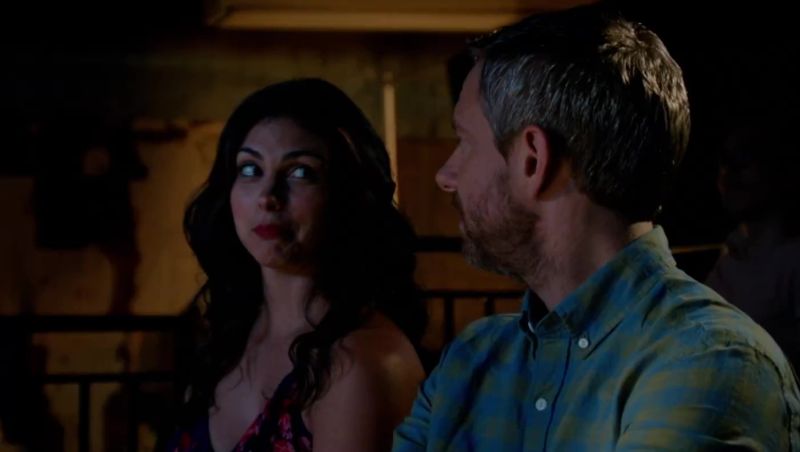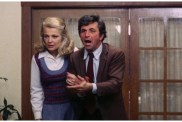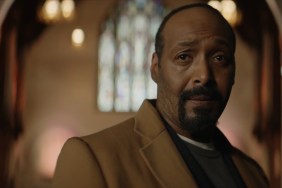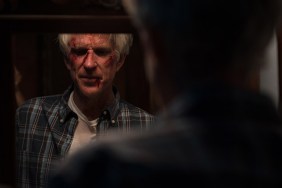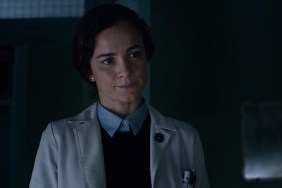
While romantic comedies haven’t exactly wained in population in recent years, but the ones that tend to be remembered bring with them an aspect of reinvention that doesn’t necessarily subvert the genre, but adds a fresh perspective alongside the more conventional tropes.
Ode to Joy is one of those films. The film stars Martin Freeman (The Hobbit) as Charlie, a man who suffers from a disease called cataplexy, which causes him to become overwhelmed by specific emotions. In Charlie’s case, it’s joy, which has caused him to wall off his life from anything remotely uplifting. Despite his fervent attempts to subvert his happiness, things change when he meets the free-spirited Francesca, played by Morena Baccarin (Deadpool 2) who upends his life beyond her ability to make him pass out.
Ahead of the film’s premiere on IFC, which is available to stream today, we spoke with both Baccarin and director Jason Winer (Modern Family) about how they sought to tell a unique story in the confines of the romantic comedy.
It turns out, the process began seven years ago, sparked by an episode of This American Life which focused on cataplexy.
“[It’s] little-known but affecting more people than you think,” Winer explained. He recalls the film’s producer, Mike Salvo, telling him that, “‘I know this is a weird idea, but I think the romantic comedy is kind of petered out because we’d run out of reason why a couple can’t be together. There aren’t any new reasons for an audience to watch a movie and say, ‘This is what’s in their way. I think this might be a brand new one that I’ve never seen before.’ And I agreed. I loved the idea, and he and I began the process of I’m putting it together.”
In doing so, it was fundamentally important to Winer to accurately portray the disease on film. “The first thing we want people to know is that the disorder is real. It affects about one in 2000 people, 3 million people worldwide. So, it’s actually not even that rare. Narcolepsy with cataplexy is the disease where you lose muscle control and essentially collapse when, uh, triggered by extreme emotions. In the case of Charlie, it’s most notably joy. Matt Warner, who wrote the film, did extensive research into the disorder.”
Of course, the episode of This American Life served as a good jumping-off point, particularly one aspect which served as the film’s opening. “The notion that the man living with it described collapsing at a wedding from happiness really formed the inspiration for the opening scene of the film, it also tells the story by a photo being taken while he was out of it and they propped him up.”
While Charlie’s plagued with cataplexy, which results in him walling off his emotions, Francesca, by contrast, has no problems embellishing them at any given scenario.
“I think her meltdown in the library the first time you see her is likable,” says Baccarin. “I think we’ve all been in that place, maybe we didn’t climb on tables and destroy books, but we’ve all been in that way where you’ve had it and you don’t know what to do. And in her mind, she has no filter, it all manifests itself physically. Most people have those feelings, but you don’t really act on them.”
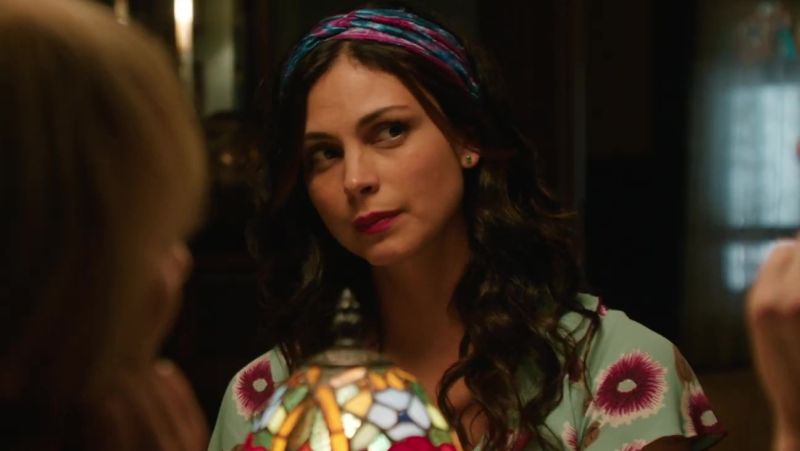
For Baccarin, the process of finding Francesa was less focused on traditional research and more about drawing inspiration from her family.
“I’m very shy, but I grew up in Brazil and my family is very emotional, including my mother,” Baccarin began. “It wasn’t really important for me to know the ins and outs of it because I wasn’t playing it. IIt was fun to watch Martin kind of navigate, you know, when he passes out, is it like a buckle the knees of fight back or is it a surprise goes, go sideways and fall. It was really fun to kind of work out which was what.”
While her co-star worked out the specifics of his affliction, Baccarin was left to find out more about who Francesca was on her own, in a way that allowed her to truly understand her and her bigger-than-life persona.
“We had some rehearsals, which was really helpful, but I had to figure out for myself her back story and what makes her tick and what are the issues,” Baccarin explained. “We’ve all had those relationships, so that came easy. But [Martin] and I had our separate work to do, and then ‘act together’ work to do. And the together came more in the form of figuring out in our scenes together what was too much, what was too far. You have to make it believable, and she’s an incredibly vivacious character. So, it’s about fine-tuning.”
A lot of that fine-tuning became necessary for scenes where the story was being told around what the characters were saying, particularly after Charlie convinces his brother, Cooper (Jake Lacy), to date Francesca to spare him once more from his emotions. “You have to really hit those beats, and it’s harder than one would think. It’s very subtle. There’s all the subtext in there between everybody and each person has to play their truth and then it’s Jason’s job to kind of catch the moments that you see on screen.”
“They’re incredible actors and I think their bond came because of their investment in the work,” Winer said. “Of course, in a movie like this, you know, everybody did the movie for no money. It’s a small movie, we didn’t have a lot of money. Everybody was attached to it because of their belief in the script and their passion for telling this story. So that really fostered that connection on the set. You know, the actors didn’t even have trailers. We just had areas where they hung out. But with a little movie like this, everybody makes sacrifices to do it, and in the best case that brings everybody together.”
“Don’t tell that to the producers of Deadpool,” Winer joked. “They might get ideas.”
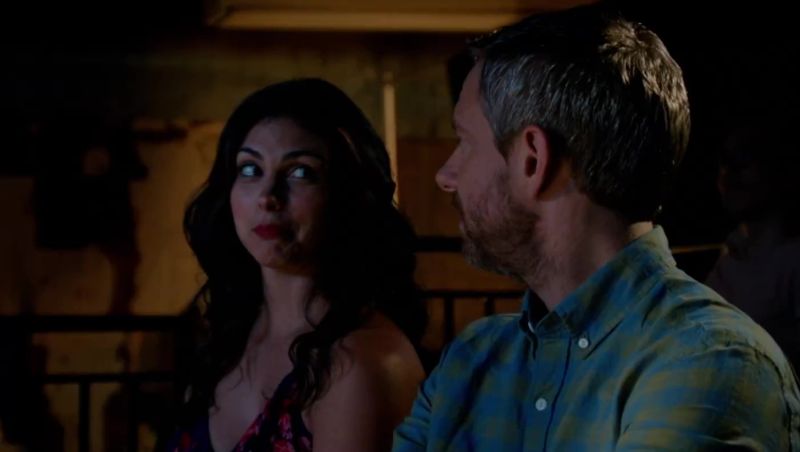
RELATED: Morena Baccarin Movies and TV Spotlight
Even given the amount of time Winer and his collaborators had put into the project, he credits both Freeman and Baccarin for not only using the years worth of work they’d done creating these characters but adding their own input to help elevate their scenes together.
“We worked on those characters honing that dynamic in advance of them ever really meeting each other in person and then they took it together to a new level, and had a bond which was how serious they were about creating the reality these characters,” Winer said. “They’re both classically trained, and part of that training creates the ability to be present in a scene. They both, of course, make choices, things they want to try things they’re bringing to it. But Martin, in particular, never does a scene the same way twice. He is completely alive and listening to and responding to what his scene partner is giving. And so each time you get a completely new thing in a completely different take and that makes the movie fun to edit, but it also creates a feeling of chamber street between them because he is alive and responding to what he is using in the moment.”
In short, it’s the kind of character that Freeman seemed born to play.
“We’re meeting [Charlie] in a time in his life where he just about resigned to the fact that his disease might just prevent him from ever finding love or happiness forever. And he’s just about resigned himself to that and, and that kind of like crustiness, it’s natural to Martin. Yet at the same time, he still has the hopefulness and the funny we met and loved in Four Weddings and a Funeral and in the early episodes of The Office. This character is like a greatest hits of Martin Freeman all wrapped into one.”
Ode to Joy is currently available to stream on IFC.
